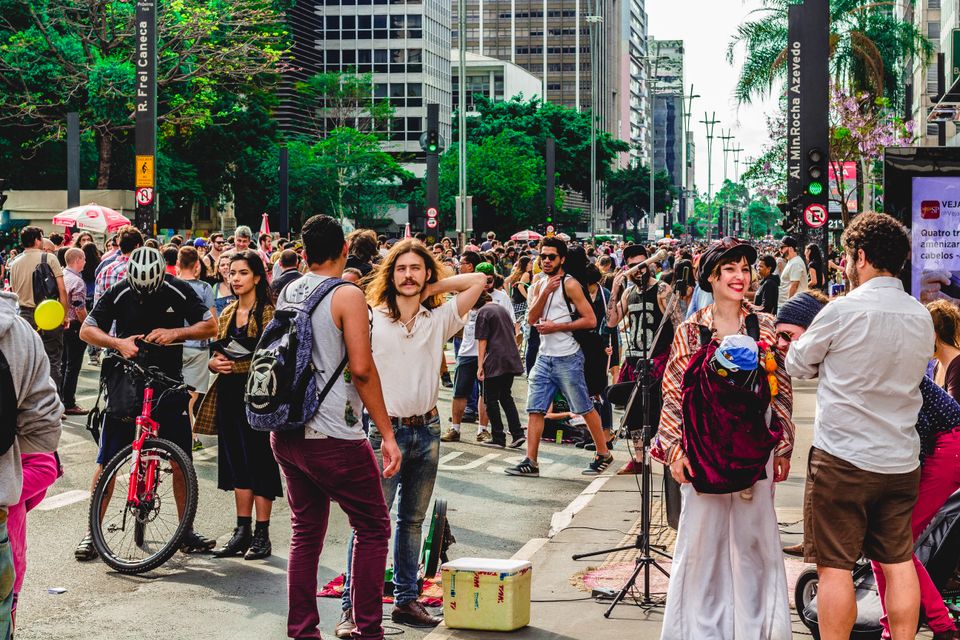🦀 PT Crab Issue 95 - PD CPG and Walkability

This week, PTJ dropped a new set of clinical practice guidelines on Parkinson’s disease and we’re talking walkable neighborhoods and fall risk. King Crab supporters got two extra pieces this week (like always), a breakdown of those PD CPGs and one huge systematic review on the effects of cervicocranial flexion exercise for neck pain. Become a supporter for just $5 per month here. I’m also adding in a short section at the end with the best things I read or listened to this week. Read it if you want, skip it if you want. Doesn’t matter to me!
With that, let’s dive in!
The PD CPG
The Gist - You know that all the CPGs that I’ve found so far are collected in one place on PT Crab’s site, right? If not, now you do. If I’m missing one, use the form there to let me know. I’m always trying to catch up.
Anyway, this week (okay actually last month but I’ve been busy) dropped their new typical Parkinson’s disease clinical practice guidelines and they’re nice and to the point.
For the details, check out the paper! - Here ya go!
More Infrastructure, Fewer Falls
The Gist - So, before we dive into this one, let me say that I am quite biased here. I support all infrastructure to help people enjoy streets more, slow cars down in cities, and get more people walking, cycling, and everything else. Cars have their place, but streets are for people. People of all types and transport.
With that out of the way, let me tell you ‘bout this paper. The goal was to survey urban-dwelling older adults about their fall history and their perceptions of neighborhood walkability. 132 urban-dwelling adults over 65 from Flint, Michigan completed a survey to assess health status, physical activity, and walkability of their neighborhoods, then compared it to their fall histories.
The analysis itself was pretty simple, they went through the Neighborhood Environment Walkability Scale-Abbreviated and compared the answers to the people’s fall histories. The NEWS-A has 5 sub scales and the one that correlated with a recent history of falls (the last 4 weeks) was “Land Use Mix”. Land use mix assesses whether the neighborhood itself is walkable, with statements like “Stores are within easy walking distance of my home” and “It is easy to walk to a transit stop from my home.” People who fell more tended to live in neighborhoods that scored more poorly on the land use mix scales.
Tell Me More - Why do you care? Well, for one, the APTA cares. Two motions related to this passed in the HOD in 2016, with the authors commenting
To promote safe physical activity and active forms of transportation for individuals and populations of all ages and abilities, both motions included language describing the role of the association (the APTA) or physical therapists in identifying how the built environment, or neighborhood, influences physical activity.
I’m sure many of us prescribe walking programs, so take a minute to think about how or if those who you prescribe them to can walk safely.
As physical therapists often prescribe walking as part of an exercise program, our results suggest that therapists should ask older adults living in urban settings about the walkability of the neighborhood or locations in which they live.
But enough of my propaganda for walkable neighborhoods, good transit, and safe streets. Interestingly, in this study people in all groups were equally active which the researchers say suggests the built environment is more about preventing falls than overall activity. Lastly, “Body mass index is significantly associated with perceptions of neighborhood walkability, especially in older adults in low-income neighborhoods. Higher BMI is also associated with lower physical activity and increased fall incidence.”
Paper - Have at it. Open access here.
The Best Things I Read and Listened to This Week
This is a quick, optional (cuz everything here is optional really) section I’m considering adding. Let me know what you think by smashing that reply button and knocking out a quick email.
- Ezra’s Klein’s discussion of the philosophy of games with C. The Nguyen, the games philosopher from the University of Utah
– In this long, wonderful interview, Ezra and C. Thi talk about games and viewing life through the lens of a game designer. It’s a method of thinking that gave me a new lens of looking at the world, one where points, incentives, and choice to participate in that system are the key factors motivating our life. Here’s a key quote
I think, throw games into a different light to say something happening all the time in our life is we are adopting or being given goals that are attached to constraints, that are measured in certain ways, and that we can only achieve using certain means. And oftentimes we don’t have a deep consciousness of it. Oftentimes it is happening in a manipulated way…. And that games are the art form where, one, that is done for us in a dedicated way, but we choose to opt into it. But two, potentially one where we can begin to manipulate that part of ourselves intentionally.– It fits along with a founding dogma of Dan Ariely, the great Duke economist, “you get what you measure.” Be careful about what you measure and what you’re being measured by.
- This post from the APTA and PT Dr. Iris Warchall, an Autistic PT who writes about just a few of the keys to providing effective neuro-diverse care. Here’s a key quote:
Those reading this article might notice I refer to myself as Autistic, not someone with autism. Most autistic adults prefer identity-first language instead of person-first language, because we see our autism as an integral part of ourselves, not a disease that we wish we were cured of.
- And this piece and short film from the amazingly-named Slim Wonder about bikepacking Sierra Leone, from whence he had immigrated in the 1980s. Here’s a key quote:
This was our first introduction to Ajo, the spirit of celebration and friendship and goodwill to those around you, that we found the people of Sierra Leone were filled with. Ajo became the theme of the trip. Each time the universe tried to thwart us, someone would step in with a warm heart, a smile, and a helping hand. We saw and met people who felt like family.
And that’s our week! Thanks for hanging on one extra day while I worked out some technical issues. As always, please share the Crab with friends and colleagues, you’re the only way it grows. And do please consider becoming a supporter. It’s $1.25 per week and is the fuel that keeps PT Crab going. Sign up right here. Thanks!
Here’s this week’s bibliography:
- Blackwood, J., Suzuki, R., & Karczewski, H. (2022). Perceived Neighborhood Walkability is Associated with Recent Falls in Urban Dwelling Older Adults. Journal of Geriatric Physical Therapy, 45(1), E8. https://doi.org/10.1519/JPT.0000000000000300
- Osborne, J. A., Botkin, R., Colon-Semenza, C., DeAngelis, T. R., Gallardo, O. G., Kosakowski, H., Martello, J., Pradhan, S., Rafferty, M., Readinger, J. L., Whitt, A. L., & Ellis, T. D. (2022). Physical Therapist Management of Parkinson Disease: A Clinical Practice Guideline From the American Physical Therapy Association. Physical Therapy, 102(4), pzab302. https://doi.org/10.1093/ptj/pzab302






Comments
Want to leave a comment and discuss this with your fellow PTs? Join PT Crab and get summarized PT research in your inbox, every week.